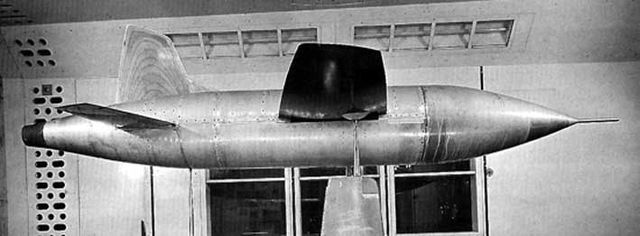R.A.E. – Vickers Transonic Research Rocket
The R.A.E. Vickers Transonic Research Rocket was developed from the Miles M.52, a British research supersonic aircraft a project which was undertaken in top secrecy between 1942 and 1945 to a Ministry of Supply specification E.24/43. The project was cancelled because the Government of the day was persuaded that with the accumulation of data it was felt that the E.24/43 aircraft was unlikely to reach sonic speed. Wind tunnel model tests apparently indicated serious loss of longitudinal stability at high subsonic speed as was then characteristic of existing aircraft. The decision was reached to acquire preliminary experience of flight under transonic conditions using rocket-driven pilotless scale models. The Ministry of Supply (MOS) formed the Guided Projectile Establishment under W. P. Cooke at Westcott,
Buckinghamshire, and the Rocket Propulsion Group under A. D. Baxter at RAE, Farnborough. Work commenced in applying German technology, with the Halstead Experimental Centre of the MOS monitoring commercial exploitation.

One of the Vickers models undergoing supersonic wind tunnel testing at the Royal Aircraft Establishment (RAE) c.1943
Royal Aircraft Establishment
The Royal Aircraft Establishment (RAE) was a British research establishment, known by several different names during its history, that eventually came under the aegis of the UK Ministry of Defence (MoD), before finally losing its identity in mergers with other institutions.
Royal Aircraft Factory (RAF) c.1915
Royal Aircraft Factory B.S.1 in 1913
The first five Superintendents at Farnborough
A model of the Miles M.52 undergoing supersonic wind tunnel testing at the RAE circa 1946




